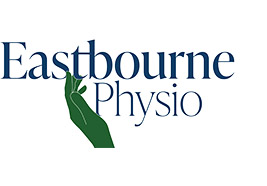INJURY REHABILITATION
Exercise is a vital part of the rehabilitation process for most sporting injuries. The idea that an athlete is completely cured once the treatments on the therapist’s couch is finished, is simply outdated. We have to move it or lose it.
What is Injury rehabilitation?
Getting you back up to speed, literally, with exercises to improve your strength, stamina, balance, confidence, heart and lung conditioning, agility, flexibility and speed. This is done on equipment ranging from treadmills and weights to Swiss balls and Pilates mats. This also requires homework!
Where is injury rehabilitation done?
The treatments are provided in our gym, individually tailored for one-to-one attention and service.
Who is injury rehabilitation for?
Anyone who has sustained a significant injury is going to require a program of exercises, stretches and specifically related (sports) training drills to ensure a complete recovery, depending on whether it’s anything from a badly sprained ankle through to reconstructive surgery of a knee.
A major component of every injury is the overcoming of fear and to a degree anxiety of re-injury. But we understand you have to get back on the horse as soon as you fall off. These concerns and considerations are a part of rehabilitation management. Being guided by someone who has had 30 years, plus, experience in this regard does help.
When is injury rehabilitation needed?
Some injury rehabilitation exercises can commence as little as two days after an injury. Other major injuries, such as knee ligament reconstruction may take six months of your hard work to get back to pre-injury levels.
Why is injury rehabilitation necessary?
Have you ever noticed how some people have a permanent limp yet the injury is years old? This is because the body will compensate in its movement patterns after an injury and these faulty compensations may cause more disruption than the actual injury. With rehabilitation we retrain your movement. Often we will aim to get you stronger and more flexible than you were before your injury.
How is it done?
Blood, sweat, tears and laughter.
Examples
 An athlete recovering from an ankle sprain will need to strengthen the ankle and regain stability with exercises geared towards balance. The classic scenario of an ankle being ‘weak’ after a sprain is often actually a case of poor balance righting control. This can be improved hugely with exercises on a wobble board.
An athlete recovering from an ankle sprain will need to strengthen the ankle and regain stability with exercises geared towards balance. The classic scenario of an ankle being ‘weak’ after a sprain is often actually a case of poor balance righting control. This can be improved hugely with exercises on a wobble board.
An athlete recovering from a hamstring strain would need to stretch and strengthen the injured hamstring to ensure that flexibility and strength are equal for both injured and non-injured sides.
First rehabilitation tip (basic, but extremely effective) after any suspected injury apart from a major fracture or open wound or laceration.
Injured?
The following protocol helps with pain relief and to control the inflammation and swelling. If it is done quickly, it can speed up healing time.
REST the injured part immediately
ICE the injury site (15 minutes per hour)
COMPRESS the injured site with strapping or bandaging the injured limb
ELEVATION of the injured site (if ok) to reduce swelling
